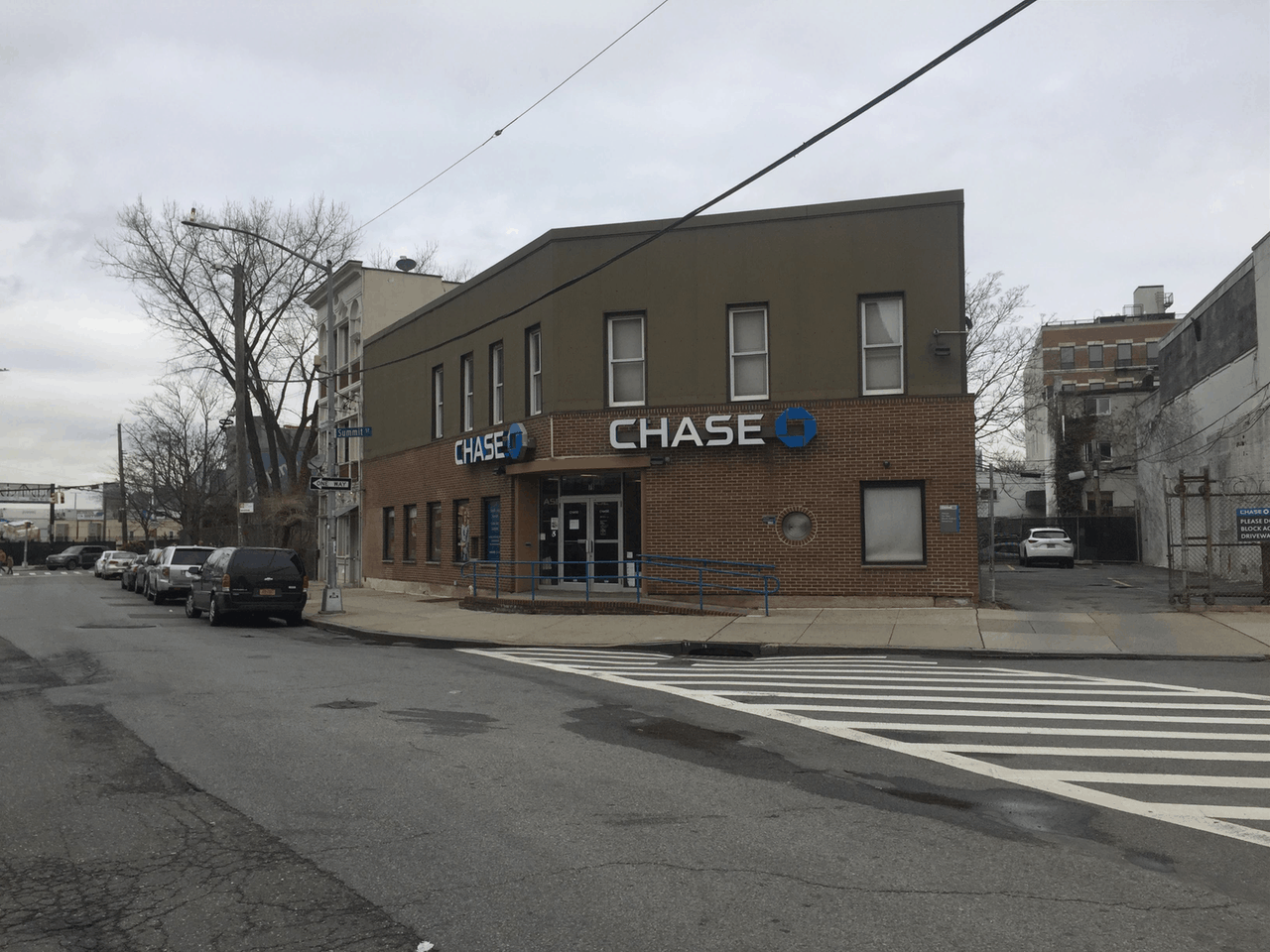Chase Bank has announced that its branch at 79 Hamilton Avenue will close on June 2.
According to Chase’s Carolyn Evert, Vice President of Northeast Regional Communications, the bank “is being consolidated to our 360 Court Street branch in Brooklyn, which is 0.6 miles away.” She noted that Chase will transfer “all customer accounts” to the Carroll Gardens location. A letter to customers also recommends the Chase Mobile App for virtual financial services.
Red Hook Civic Association president John McGettrick, however, stressed the significance of brick-and-mortar banking, which will become more challenging for locals. “Where do you go and cash a Social Security check? A lot of people both in and outside of the Red Hook Houses are elderly,” he pointed out. “What about people within the community who would need a home improvement loan or a loan to buy a car?”
When Santander Bank – previously Sovereign Bank and, before that, Independence Savings Bank – shuttered its branch at Columbia and Lorraine streets last summer to make way for a mixed-use development, Chase became the only easily accessible commercial bank serving Red Hook. Located in the Columbia Street Waterfront District, it sits directly across the street from Red Hook’s Harold Ickes Playground. The closure will make the area a “banking desert.”
Longtime Red Hook residents may recall the term. In 1996, Jay McKnight and Wally Bazemore of the Red Hook Houses organized a petition drive to convince Charles J. Hamm, the president of Independence Savings Bank, to open a branch in Red Hook. They gathered 3,000 signatures, which dispelled Hamm’s misgivings about investing in a low-income community.
Recently, the neighborhood has been more prosperous than ever, and that may be the problem. Chase employees report brisk business, but property values have risen in the Columbia Street Waterfront District. JP Morgan Chase, which owns 79 Hamilton Avenue, is expected to sell the property once the bank has shut down – unless, perhaps, March’s economic crash discourages the prospective buyer.
Last June, Chase closed its Williamsburg branch at 819 Grand Street after selling the building, which now sits vacant, to Fortress Investment Group. If a similar deal is in the works now for 79 Hamilton Avenue, it won’t be the first time in recent memory that real estate speculation involving the property has stirred local controversy.
In 2018, the owner of 41 Summit Street, which abuts the Chase Bank, submitted an unusual rezoning request to the Department of City Planning in the hope of obtaining permission to construct a seven-story apartment tower on the low-rise block. In order to circumvent rules against “spot rezonings,” 41 Summit Street LLC included in its application two adjacent properties – 79 Hamilton Avenue and 75 Hamilton Avenue – whose separate owners had not signed on to the plan.
The local councilman, Brad Lander, regards rezonings as an important tool for the creation of affordable housing. The proposed tower at 41 Summit Street would not have been big enough to trigger Mandatory Inclusionary Housing, the city policy that requires developers to set aside apartments for low-income and middle-income tenants, but the applicant suggested that the sought-after rezoning might persuade a future developer to buy 79 and 75 Hamilton Avenue and combine the lots to construct a larger residential building with affordable units.
Chase, however, insisted that it had no intention of selling 79 Hamilton Avenue, and Lander rejected the plan in 2019, forcing a withdrawal of the application. In his view, the project “did not have sufficient public benefit to merit its impacts.”
Anthony Bradfield helped lead the Columbia Waterfront Neighbors, a community group that opposed the rezoning for similar reasons. He suspects that, if Chase has changed its mind since last year about selling its branch, another residential land use application may arrive sooner rather than later.
“Whoever buys it is going to want to develop it,” he said. “I know a lot of my neighbors were shocked because they bank there.”
On March 16, State Senator Velmanette Montgomery, who represents Red Hook, sent a letter to Mark Ricca, the president of Municipal Credit Union (MCU). Montgomery hopes MCU will open a branch in the neighborhood. Credit unions are member-owned nonprofits that offer financial services, as banks do, but tend to eschew high interest rates and predatory fees.
“It has come to my attention that the Chase Bank in Red Hook, Brooklyn will be closing, leaving the neighborhood without any banking options,” Montgomery wrote. “I respectfully request that the Municipal Credit Union consider utilizing the Banking Development District (BDD) program to expand your services into the Red Hook community.”
In December, Montgomery wrote a new law to allow credit unions to participate in New York State’s BDD program, which, according to the New York State Department of Financial Services, “encourage[s] the establishment of bank branches in areas across New York State where there is a demonstrated need for banking services.” In Banking Development Districts, branches can qualify for as much as $10 million in subsidized deposits from the state.
The Brooklyn Daily Eagle’s archives reveal that 79 Hamilton Avenue has served as bank since at least 1894. An early owner, the Corn Exchange Bank, merged in 1954 with Chemical Bank, which acquired Chase Manhattan in 1996.









